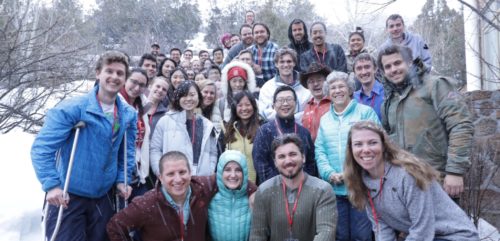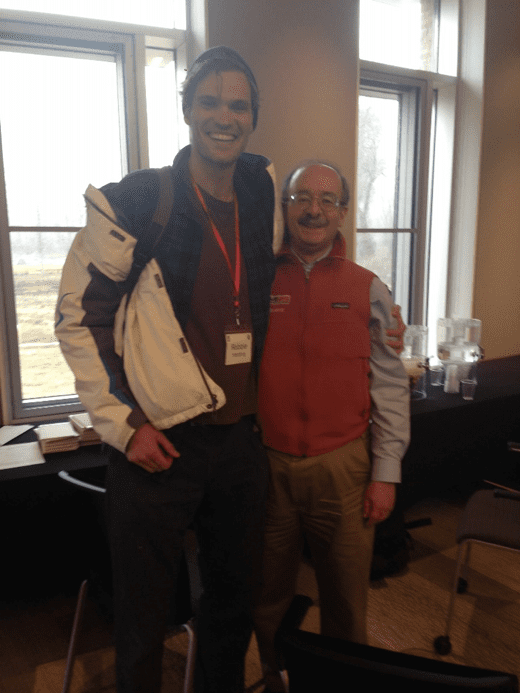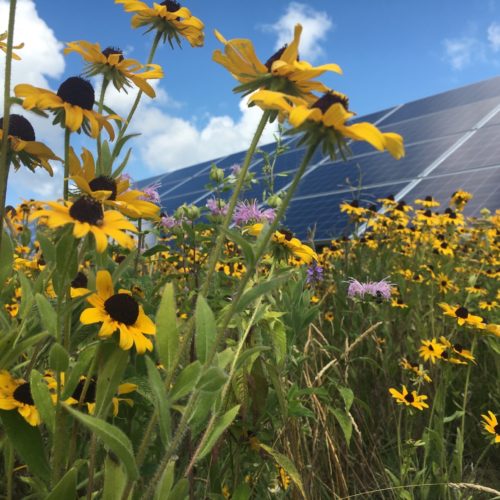
Learning Extreme Energy Efficiency at Rocky Mountain Institute
For me, the best spring break is not on a beach; it’s in the mountains. High up in the Roaring Fork Valley in Western Colorado, amid the snowcapped peaks, there’s a river that babbles past the small towns and their quirky residents. There’s not a lot out there. It feels remote. But nature is right on the doorstep, the air is clean, and signs of wild animals are all about. Tracks from big horned sheep mark a trail down to the river and continue through the thawing mud, and eventually lead right past my home base for the week, Rocky Mountain Institute.
I spent my last spring break from Stanford University at RMI’s E3: Extreme Energy Efficiency course. It’s a six-day program held each year that teaches 30 to 40 Stanford students to learn and practice how to increase energy efficiency through whole-systems design.
One of the keys to success in the climate fight is interdisciplinary collaboration, and taking E3 is an excellent way to sharpen this skill. Every day you’ll be in class with students of engineering, law, and business. There are three lectures daily, and once a day you’ll be sorted into five-person teams and will have to apply your different talents to solve “puzzlers,” or challenges drawn from case studies. It’s a valuable opportunity to take on real-world problems, but you’ll only have a few short hours with your teammates to devise a solution and prepare a five-minute poster presentation. It’s intense, but doable, and the problem-solving techniques that RMI will teach you will forever change the way you approach a problem.
As the week goes on, you might start to feel fatigued. After winter quarter finals and the travel and the lectures, your brain will have been on a marathon, and it deserves a break. Luckily, the teachers at RMI have accounted for this. Throughout the week they’ll ask you to simply go walk out in the beautiful nature and to take note of what’s happening all around you. They’ll suggest practices in mindfulness and give you opportunities for peaceful reflection. When you reconvene, you can share your musings if you like, or just enjoy listening to your classmates’ observations. The meditation breaks are a breath of fresh air, a respite, a relaxing change of pace.
Taking time to marvel in the pristine nature of Colorado’s Roaring Fork Valley reminds me of the natural beauty of this world. It should remind all of us what we have to lose if we fail to prevent the worst effects of global warming. It’s a force that motivates the people who live here, and it’s why top scientists, nature enthusiasts, and Fortune 500 CEOs all flock to this valley. They are armed with the belief that we can indeed create a better future, and all of these smart, ambitious, and motivated people gathering in one place produce something very special in the world. They breathed hope into me and my fellow students when we took E3 in 2019. And with RMI’s guest speakers—leading professionals in the climate fight—they brought us to the cutting edge of the field.
By the end of the week your brain will be bubbling with new information. But perhaps the most important aspect is the connections you’ll make. After going through this intense week, you’ll make some new friends. And you’ll get the email addresses of some serious leaders in the industry who someday you might even get to work with.
This class is also a hopeful experience. There is a lot of negativity out there about climate change, but RMI left me with a sense of inspiration, a belief that we can solve this, and the confidence of knowing that I—and each one of my classmates—can play a part.
The author with Amory Lovins



